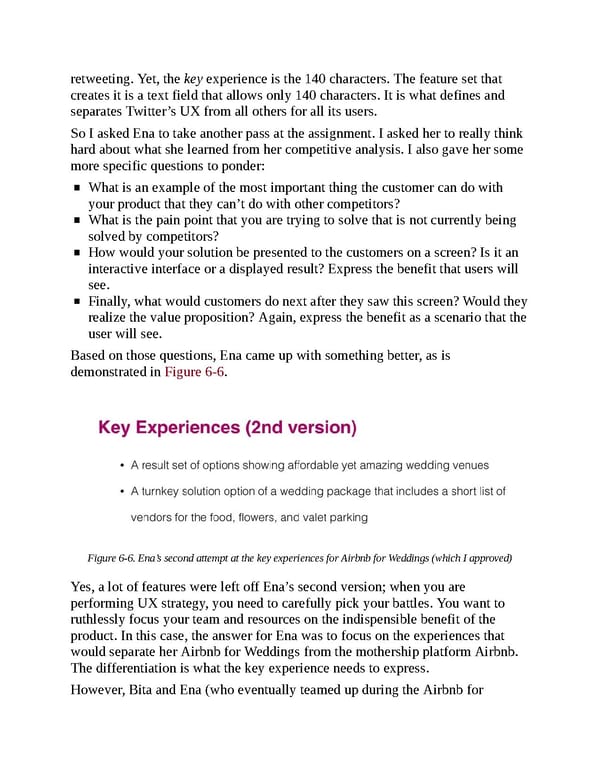retweeting. Yet, the key experience is the 140 characters. The feature set that creates it is a text field that allows only 140 characters. It is what defines and separates Twitter’s UX from all others for all its users. So I asked Ena to take another pass at the assignment. I asked her to really think hard about what she learned from her competitive analysis. I also gave her some more specific questions to ponder: What is an example of the most important thing the customer can do with your product that they can’t do with other competitors? What is the pain point that you are trying to solve that is not currently being solved by competitors? How would your solution be presented to the customers on a screen? Is it an interactive interface or a displayed result? Express the benefit that users will see. Finally, what would customers do next after they saw this screen? Would they realize the value proposition? Again, express the benefit as a scenario that the user will see. Based on those questions, Ena came up with something better, as is demonstrated in Figure 6-6. Figure 6-6. Ena’s second attempt at the key experiences for Airbnb for Weddings (which I approved) Yes, a lot of features were left off Ena’s second version; when you are performing UX strategy, you need to carefully pick your battles. You want to ruthlessly focus your team and resources on the indispensible benefit of the product. In this case, the answer for Ena was to focus on the experiences that would separate her Airbnb for Weddings from the mothership platform Airbnb. The differentiation is what the key experience needs to express. However, Bita and Ena (who eventually teamed up during the Airbnb for
 UX Strategy: How to Devise Innovative Digital Products that People Want Page 150 Page 152
UX Strategy: How to Devise Innovative Digital Products that People Want Page 150 Page 152